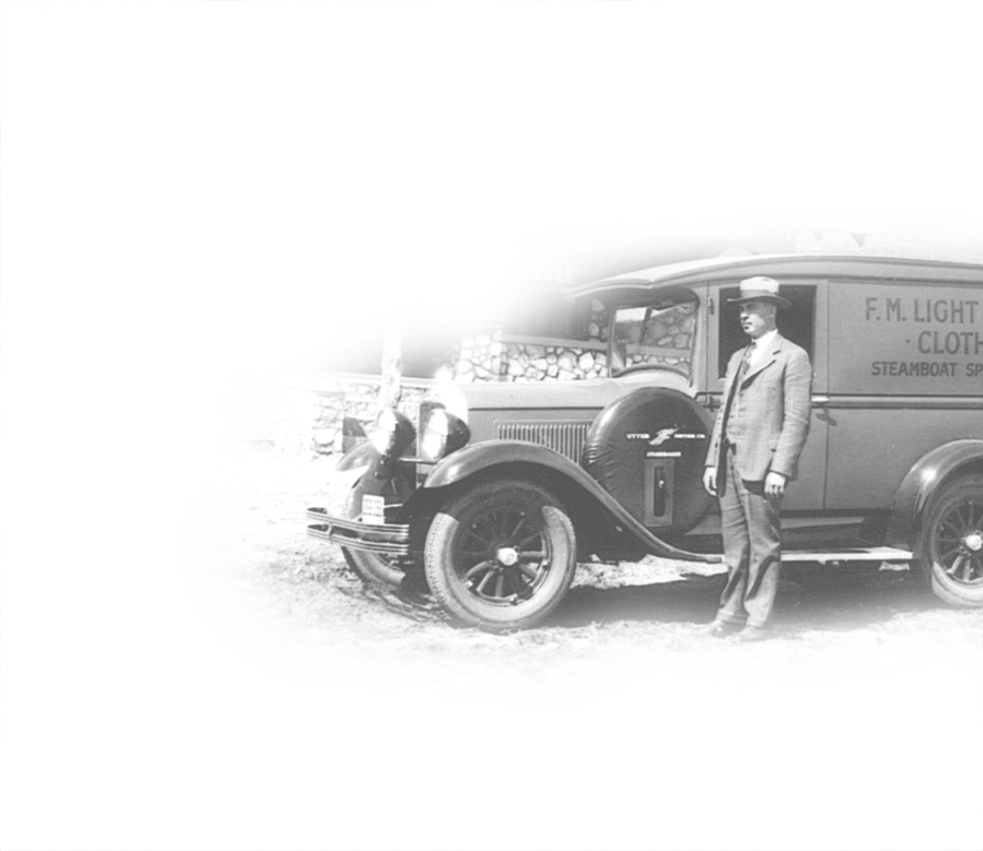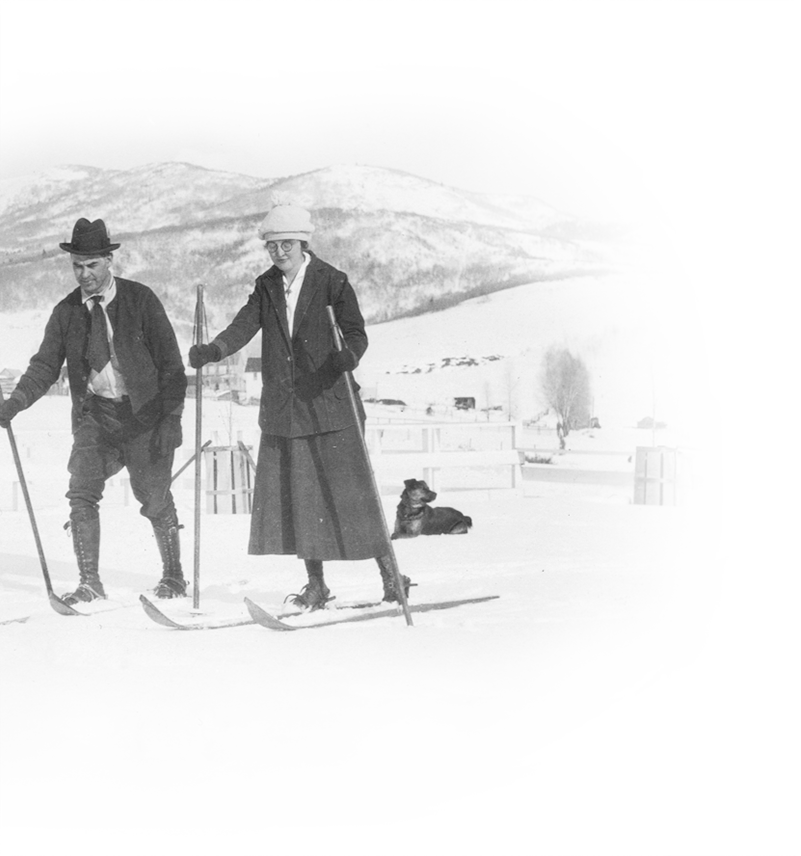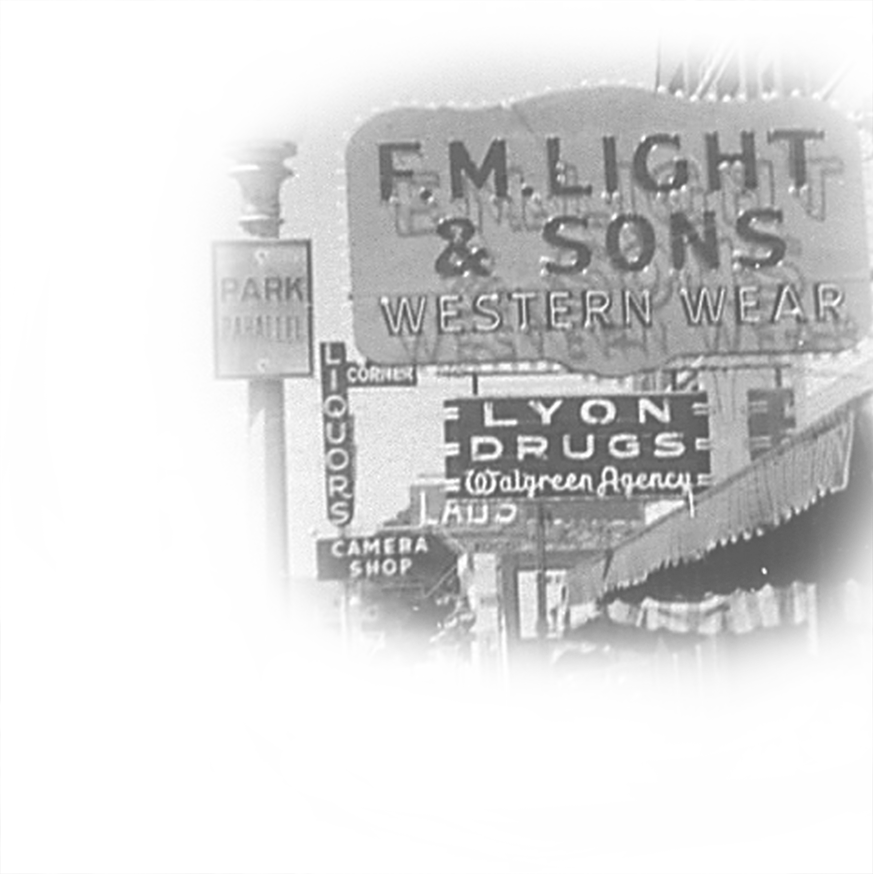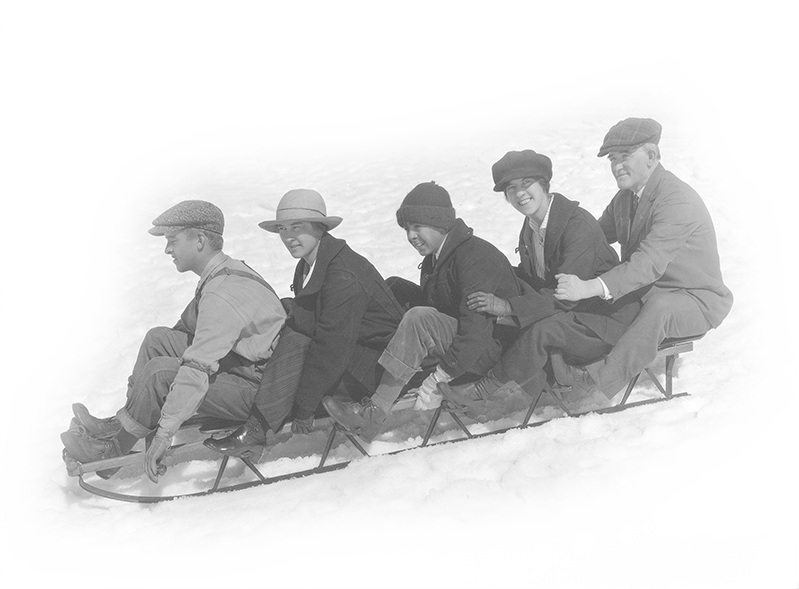Signs of the Times in Steamboat Springs
All roads lead to F.M. Light & Sons, a family-owned retail institution that’s been outfitting the West for 100 years.
We spot the first yellow-and-black tin sign a few miles north of Kremmling, Colo., on a lonely stretch of U.S. Highway 40. Actually, it might have been the second. At 75 mph, it takes a hundred yards for the brain to register the sight of the first sign and by then we’re barreling past the second. “Since 1905 F.M. Light & Sons,” it reads.
My family and I are on our way to Steamboat Springs for summer faction. “Cowboy boots for the whole family,” recites my second grader. “Get the ‘Light’ idea!” I chime in; “$4.98 hats,” adds my husband. By the seventh sign, my kids have put aside the GameBoys and are craning their necks to see what the next sign will say.
Each tells a story. In spite of exposure to the harsh elements, most signs are in remarkably good shape. No two messages are quite the same and we quickly learn the store is celebrating its 100th anniversary.
A dark summer thunderstorm soon kicks up around us. Sheets of rain and pea-size hail pelt our car. In spite of very limited visibility, we can still make out the yellow-and-black signs.
By the top of Rabbit Ears Pass, the storm has passed and we’ve counted 31 signs. Below us, the Yampa River Valley spreads out like a lush green crazy quilt; in the distance at the base of Mount Werner lies Steamboat Springs. The world-famous ski trails, naked without their snow, carve through the pines. Just outside the city limits, one last sign assures us we’re on “The Right Road to F.M. Light & Sons.”
A Hundred Years Ago
Frank M. Light must have wondered if he’d chosen the right path as his stagecoach bounced into Steamboat Springs, Colo., one cold April day in 1905. The schoolteacher from Ohio had brought his wife and seven children, ages 11 months to 17 years, to the untamed mountain outpost in search of relief from his chronic asthma.
Once settled, it didn’t take F.M. long to notice that the town needed a men’s clothing store. With encouragement from local bankers, F.M. purchased a downtown lot. Seven months later, his two-story brick building was complete; $2,000 worth of merchandise had arrived – men’s shoes, wool suits and Stetson hats – and F.M. and his sons Clarence and Olin opened for business. The first day’s receipts totaled a disappointing $11.50. Day 2 yielded even less. Such a slow start might have discouraged some, but the Lights were hard-working and determined men. One other character trait led to their eventual success: The three were born marketers.
Same Yellow-and-Black Paint
The evening we arrive, my family goes for a stroll down Lincoln Avenue the town’s main artery. My children spot the store a block away because the sign out front is painted in the same yellow-and-black paint as the ones out on the highway.
One step inside and we know, almost instinctively, that this is the way a Western store should look, smell and sound. If only they could bottle the fragrance of leather boots, fresh cotton shirts and wool-felt hats, we’d gladly pay to take it home. The well-oiled oak floor sighs and squeaks with each step. Up front, an antique oak-and-glass display case holds commemorative Stetson as well as a trove of turquoise jewelry and shiny belt buckles. Hats and boots line one wall of the store. The other stocks jeans, Hudson Bay blankets and ladies wear. A ballad by The Sons of the Pioneers plays in the background.
The Way It Should Be
A few days later, I’m sitting with Ty and Del Lockhart, great-grandsons on their mother’s side of F.M. Light. When I describe our shopping trip, the men nod, pleased. “That’s just the way it should be,” says Del. I mention the heady aroma of lather and Ty agrees but comments to Del. “Did you noticed how the smell changed just a littler after we unpacked those plastic clogs?”
Plastic clogs? While the store carries plenty of the same sort of goods F.M. stocked 100 years ago, by necessity, his great-grandsons have added other merchandise to appeal to the tourists and skiers who now frequent the store. There are kids’ popguns and Indian tom-toms, upscale Royal Robbins shirts and pants, and women’s boots, in colors like lime green and hot pink.
I ask what they remember most about their grandfather Clarence. Though F.M. died before the boys were born, their grandfather lived well into his 80s. “He was all-business,” recalls Ty. “Persistent and tenacious,” adds Del.
Ty thinks of something els. “Our grandfather was always willing to try new things. That’s what kept us in business all these years.” Maybe it’s my imagination, but the brothers bear a striking resemblance to the faded photos of their ancestors hanging throughout the store. Strong jaws, direct gazes, ramrod-stright posture.
Ty, the eldest brother, and Del have worked together, on and off, for most of their lives beginning in the 1960s when, as boys, they worked in the stockroom. Both attended the University of Colorado earning degrees in aerospace engineering. They worked in the industry for several years, but eventually their hearts led them home to Steamboat. Ty took over the store in 1973 from his dad, who had purchased it from Clarence, his father-in-law, a decade earlier. “I always thought I wanted to come back, but I thought I should do something different just to be sure,” says Ty.
Del, who joined Ty in 1979, agrees and adds, “Now we joke that you have to be a rocket scientist to manage the store.”
Ahead of the Times
The Lights displayed a knack for marketing that was well ahead of their time. Through good years and bad, the men were committed to consistently promoting their business. The day the store opened, F.M. contracted for a small ad on the back page of the local newspaper, the Steamboat Pilot. To this day, an advertisement for the store has run each week.
Our discussion moves on to the ubiquitous signs. Del shows me a small metal sign promoting Stetsons that dates back to 1911. Occasionally one of these diminutive versions is found by someone using a long-forgotten horse or hiking trail and returned to the store.
By 1928, Clarence hit upon the idea of putting up larger signs along Highway 40. At one time, there were as many as 300 signs in a 150-mile radius of Steamboat. On the strength of a handshake, the Lights struck deals with ranchers to post the signs in exchange for merchandise. Lady Bird Johnson’s Highway Beautification Act in the 1960s resulted in more than half of the signs being removed. The remaining signs are considered historic. Each is numbered and registered with the state.
These days, the fifth generation of Lights hit the road for annual sign maintenance and painting. Del and Ty still do their share of the work. “Ty does best on straight lines,” jokes Del. “I just don’t let hime paint the horses or they end up looking like camels.
Making Ends Meet
Over the years, the store has weathered many challenges, none larger than the Great Depression. When 1st National Bank locked its doors in 1933, the Lights lost all their money. With no cash but plenty of inventory, the Lights decided that, rather than waiting for customers to come to town, they would take their goods to area farmers and ranchers.
With delivery trucks loaded with samples, Olin and Clarence traveled as far north as Jackson Hole, Wyo., west to the Utah border and south to Aspen. They stayed with customers, always insisting on paying for lodging. After seeing the goods, customers placed their orders, which were mailed back to the store, filled and shipped out. Within a few years, the traveling store accounted for 50 percent of total sales.
The Light’s semiannual visits were always cause for excitement, as they not only brought the latest merchandise but news from neighboring ranches. The brothers forged friendships with local families that endured for decades. In fact, Clarence continued to make the road trips until his death at 87, in 1974.
In the Genes
Today the F.M. Light & Sons legacy rests squarely on the shoulders of Ty and Del Lockhart. Between them, the two brothers and their wives have nine children. They hope to pass the torch someday. For now, they are busy exhibiting the same marketing acumen that distinguished their forefathers.
Since an anniversary this big comes around, well, only every 100 years, the brothers are taking advantage of every opportunity. In May, Willard Scott of NBC’s Today Show donned a Stetson and wished them “Happy Anniversary” on national TV.
On the Fourth of July, the store sponsored a cattle drive down Lincoln Avenue, and a hoedown later in the month. To encourage Labor Day business, F.M. Light & Sons is bringing in the spectacular Great American Wild West show to the town’s rodeo arena. But these marketing mavens aren’t stopping here. All year long, the store windows will exhibit historic memorabilia and there are special commemorative items such as chocolate bars, mugs, leather coasters, T-shirts and hats aplenty. A CD by a local band featuring “The Ballad of F.M. Light” and a documentary on the store’s history are also for sale. As a nostalgic touch, F.M. Light & Sons cash registers will ring with silver dollars used as change.
Building on Tradition
It’s the end of our stay in Steamboat. We’ve packed up the car, the kids and the memories and are heading home. A half-milesouth of town, we see on last yellow-and-black sign. “If You Have Missed F.M. Light & Sons, Turn Around.” I’m reminded of the yellowed postcard displayed at the store. IT is dated July 1, 1948, and signed, “A Texas Tourist.”
“Sirs,” reads the faded cursive, “In all of my traveling, from Texas to Yellowstone, down thru’ Utah, Grand Canyon and back to Mesa Verde, I have never observed any more persistent advertising than yours! The last one saying turn around if we missed you! That got me. You deserve all the trade you get.”
Yes, I silently agree as we pick up speed. You deserve it.
Carol Gustafson, owner of a public relations and communications business, has more than 20 years of marketing and communications experience with some of the Western industry’s largest companies.
This article was published in the September/October 205 issue of Western & English Today, and has been reproduced on this website with the express knowledge and permission of W&E. Click here to read the original article.




